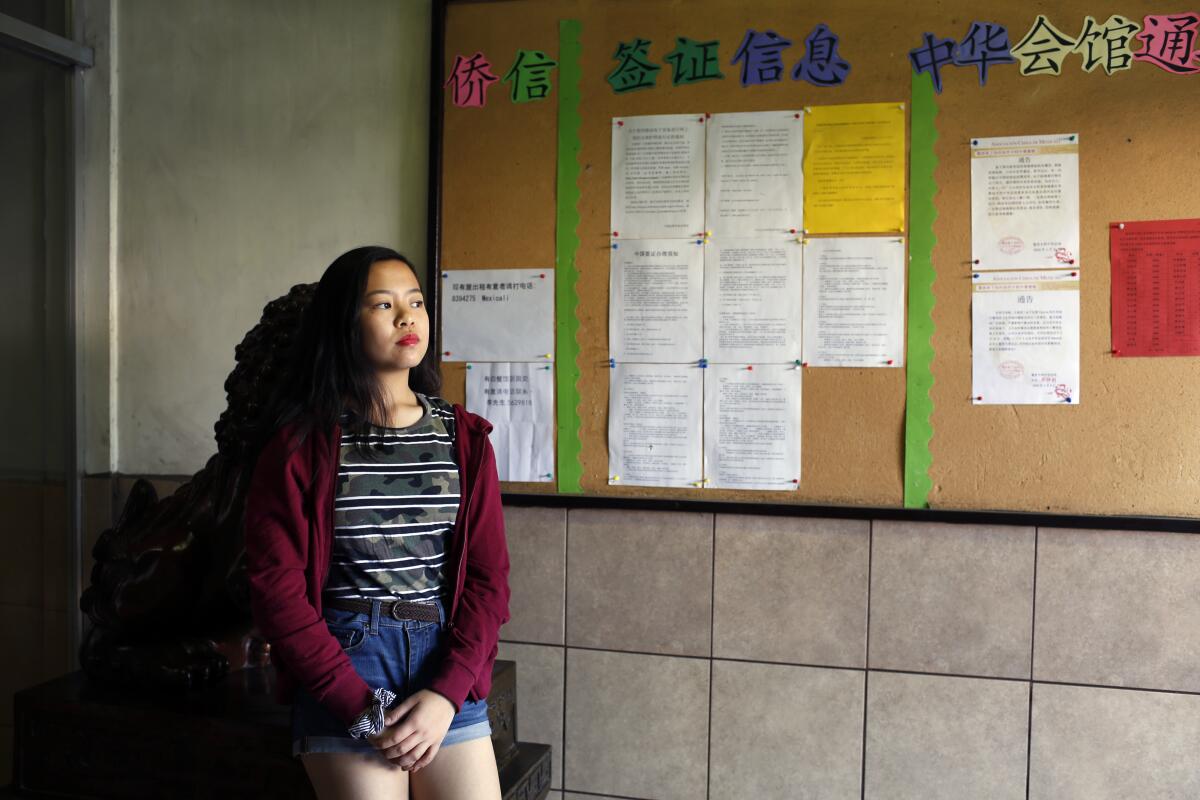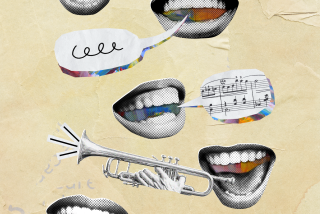Residents of Mexicali’s Chinatown face prejudice, blow to culture with coronavirus

- Share via
MEXICALI, Mexico — For Mexico’s biggest Chinatown, the ribbon cutting for a new cultural hub felt like the start of a long-hoped-for renaissance.
There were lion and dragon dancers. Student musicians played tanggu, a traditional Chinese drum, beneath a string of red lanterns. New murals depicting local heroes who helped establish the community were unveiled. And there was a booth where people could learn how to write their names in Chinese characters. Cultural events were planned out for the next three months.
That was in February. The novel coronavirus was already taking its deadly toll in China but had not yet become a crisis in Mexico or the United States.
How quickly things changed in the place known in this sprawling border city as La Chinesca.

About 75% of Chinese restaurants in Mexicali’s Chinatown have temporarily suspended their services with few offering limited take-out. The Chinese Assn. of Mexicali, which offers Mandarin language classes and helps newly arrived Chinese migrants settle in the city, shut its doors last month.
“Every event has been canceled until this situation passes,” said Ramón Yee, a representative of the Assn. of Chinese Descendants in Mexicali who is third-generation Chinese Mexican. “It’s been lonely in the Chinesca. Only some businesses are open, but those are very few.”
In Mexicali, a city of some 690,000 people bordering the much smaller California town of Calexico, there were `216 confirmed and 122 suspected cases as of Thursday afternoon. By then, the number of deaths had grown to 22. Mexico has seen a growing number of infections and deaths.

In La Chinesca, Chinese Mexicans have had to contend not just with fear of contracting the new coronavirus — which was first detected in Wuhan, China, in December — but also with a hyper-awareness of their Asian roots as reports of the pandemic have fueled anti-Chinese sentiment and racist attacks around the globe.
Walking down the street in Mexicali, some Mexicans are quick to pull their eyes to the side with their fingers and dance, mimicking a Chinese person walking on the same street, some residents say. In grocery stores, Chinese people are accused of eating dogs. Before schools were shut down, Mexican students stopped socializing with Chinese students on campus, especially if they sneezed or coughed.
Emmanuel Sámano, a 38-year-old martial arts and lion-and-dragon dance instructor for the Chinese Assn. of Mexicali, said he and his students who are of Chinese descent have felt maligned.
“When we arrived at an event to show our lion and dragon dances, as soon as they saw our dragons, we’d get comments like, ‘Oh, they’re bringing the coronavirus,’” Sámano said, adding that he tried to change the topic to avoid conflict.

“It’s sad. ... It could be a way to cope with the stress and fear COVID-19 provokes,” he said. “But from our end, we’re focusing on continuing our work in showing that the Chinese culture is just another part of the world where you can find a lot of beautiful things.”
Despite this, many Chinese Mexicans say they have largely avoided the kind of scapegoating and personal attacks that have been recorded in other parts of the world, including the U.S. Most Mexicans acknowledge the important role the Chinese community has played in shaping Mexicali.
For years, La Chinesca has struggled to keep its identity alive and vibrant, making the blow caused by the coronavirus feel especially painful.
Chinese people still live in Mexicali but no longer live inside the businesses they owned or worked at in the downtown area. According to the association, there’s an estimated 20,000 to 30,000 Chinese residents, including mestizos and descendants, though there hasn’t been an official census count. Young people of Chinese descent are mainly Mexican-born, unlike their parents who were born and raised in Canton.
“Our roots have slowly been lost because there was a point in history where in one way or another we experienced certain discrimination and families preferred speaking Spanish over Chinese and no longer taught their kids,” said Yee, of the Assn. of Chinese Descendants in Mexicali.
Mexicali’s Chinese roots go back to the late 19th century. That’s when a wave of Chinese immigrants began to call Mexicali home after they helped create railroads in the U.S. in the late 1800s. These immigrants joined other Chinese laborers who helped develop the Mexicali Valley under the Colorado River Land Co., whose top leaders included Los Angeles Times Publisher Harrison Gray Otis and his son-in-law Harry Chandler.
Laborers created La Chinesca, an ethnic hub within a two-block perimeter of the city, where they found success with shoe stores, laundries, restaurants and cafes. That helped set the building blocks for the Chinese Assn. of Mexicali, which began its mission in 1919. About 60 years ago, it opened a school on its second floor to educate students of Chinese descent about their language and culture.

By late February, as the worldwide pandemic grew, the school, which could be packed with about 200 students on a typical weekend, quickly started seeing a drop-off in attendance until only several dozen pupils remained. In March, the school closed like others across Mexico.
Esteban León, the association’s academic director and third-generation Chinese Mexican, tried to reassure parents. He said teachers kept tabs on families who had traveled abroad to China. He kept a thermometer on hand in case students started showing symptoms. It did little to allay their fears.
Students who attended Mandarin classes had felt the pandemic provided an opportunity to show support for their parents’ motherland.
A pinboard located on the first floor in the association’s hallway displayed the names of parents and the amount of money they donated to help purchase masks to send to Wuhan, China, the epicenter of the coronavirus. This was before the outbreak hit the U.S. hard, and eventually Mexico.
Cristina Chen, 42, the association’s director of teachers, said her 12-year-old son Erick attended the Mandarin classes. “I have friends in Tijuana whose kids don’t speak Mandarin,” Chen said. “They can’t read Chinese characters because they don’t have a school where they can learn.”

For the last seven years, Alexia Ma dedicated her weekends to perfecting her Mandarin. The 13-year-old sat attentively through classes every Saturday and Sunday until her parents made her stop going because they were afraid she’d get infected with COVID-19.
Eventually, the family’s flights to visit family in China were canceled by China Southern Airlines.
The dual doses of bad news hit the teenager hard. She was born in this sprawling Mexican border city but had longed to revisit the homeland of her mother and father in Guangdong, a coastal province in southern China.
“I was born here and I like Mexico but I’m just so proud to be Chinese,” she said. “I cried a lot. ... I hadn’t seen [my family] in a long time, and it had been even longer since my mom had seen her mom.”
More to Read
Sign up for Essential California
The most important California stories and recommendations in your inbox every morning.
You may occasionally receive promotional content from the Los Angeles Times.














